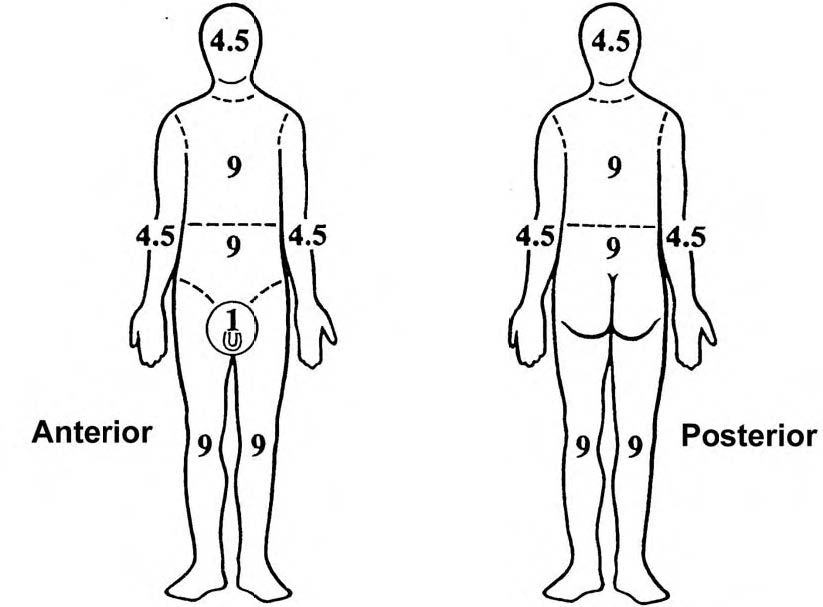This week we dive into some of the initial considerations in the resuscitation of major burn patients.
Episode 101.0 – Major Burns
Show Notes
Take Home Points
- Be prepared to intubate early, the patency of the airway can decline quickly and without warning. If there is any concern for burns to face/neck or smoke inhalation, consider taking control of the airway early.
- Review the rule of 9s and the parkland formula to direct your large volume fluid resus. Remember the parkland formula directs you to use 4 mL x %TBSA x weight (kg). Half in the first 8 hours and the second half over the next 16 hours. Given the large volume here it’s probably best to use LR or another balanced solution.
- Do a thorough trauma eval to make sure you don’t miss any other injuries and be sure to watch for developing compartment syndrome
- And last, consider the need to treat for CO and/or cyanide poisoning. Poor cardiac function, cardiac arrest or a high lactate can be clues to cyanide poisoning and just start 100% O2 while you wait for a co-ox, since CO tox is pretty likely.

Rule of 9’s
Read More
MD Calc: Parkland Formula for Burns
LITFL: Trauma! Major Burns
LITFL: Releasing the Roman Breast Plate
Parvizi D et al. The potential impact of wrong TBSA estimations on fluid resuscitation in patients suffering from burns: things to keep in mind. Burns 2014; 40: 241-5. PMID: 24050977
Hettiaratchy S, Dziewulski P. ABC of Burns: Introduction. BMJ 2004; 328: 1366-8. PMID: 15178618
Hettiaratchy S, Papini R. ABC of Burns: Initial Management of a Major Burn: I – Overview. BMJ 2004; 328: 1555-7. PMID: 15217876
Hettiaratchy S, Papini R. ABC of Burns: Initial Management of a Major Burn II – Assessment and Resuscitation . BMJ 2004; 329: 101-3. PMID: 15242917


